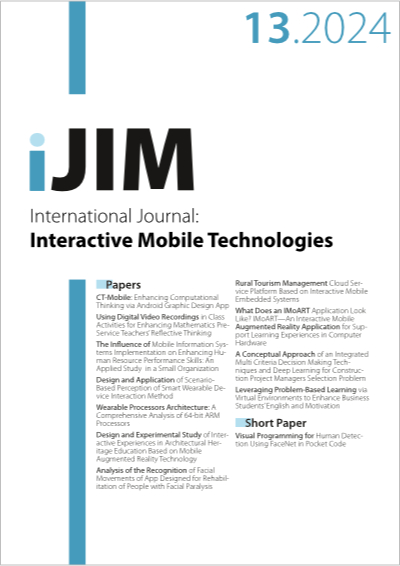What Does an IMoART Application Look Like? IMoART—An Interactive Mobile Augmented Reality Application for Support Learning Experiences in Computer Hardware
DOI:
https://doi.org/10.3991/ijim.v18i13.47565Keywords:
interactive mobile application based on augmented reality (IMoART), interactive mobile application, augmented reality (AR), educational technology, 3D simulation learning toolAbstract
This study aimed to develop an interactive mobile application based on augmented reality (IMoART), which could contribute to reshaping the learning paradigm in computer hardware courses. The IMoART application employs a marker-based tracking method. Accessible on smartphones, it integrates into the learning process, is attractive to students, and fosters engagement as users can visualize hardware through 3D objects. The application serves as an alternative and supplementary learning tool to make the educational experience more enjoyable while potentially reducing school expenditures. The results of the development process, which involved using the 4D model (define, design, develop, and disseminate), showed that the IMoART application is effective, with notable feasibility scores of 3.68 for the media aspect and 3.81 for the material aspect, as evaluated by media and subject matter experts. User responses from teachers and students further support the positive outcomes of the IMoART application, achieving a robust practicality score of 84.68%. Noteworthy aspects such as ease of navigation, clarity, aesthetic features, and instructional quality demonstrate high practicality. This study contributes significantly to the literature by presenting an evaluated model that offers an enjoyable and efficient learning experience using 3D objects, videos, images, simulations, and interactive animations in the context of computer hardware learning.
Downloads
Published
How to Cite
Issue
Section
License
Copyright (c) 2024 Agariadne Dwinggo Samala, Santiago Criollo-C, Natalie-Jane Howard, Ridho Dedy Arief Budiman, Muhammad Hakiki, Yayuk Hidayah

This work is licensed under a Creative Commons Attribution 4.0 International License.



